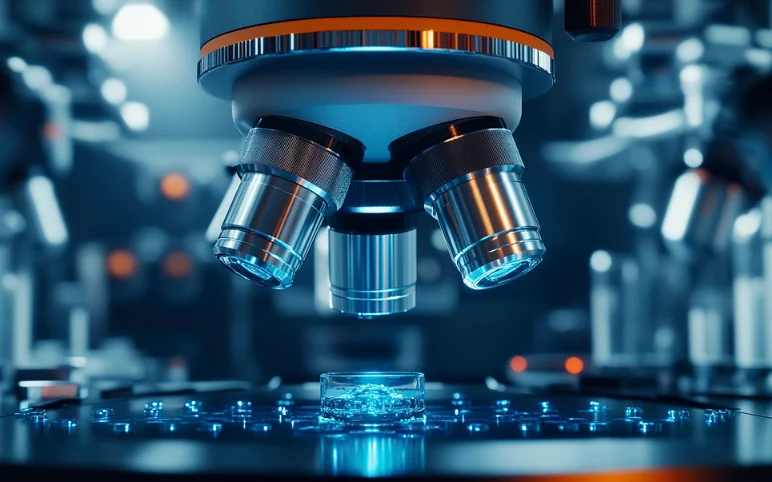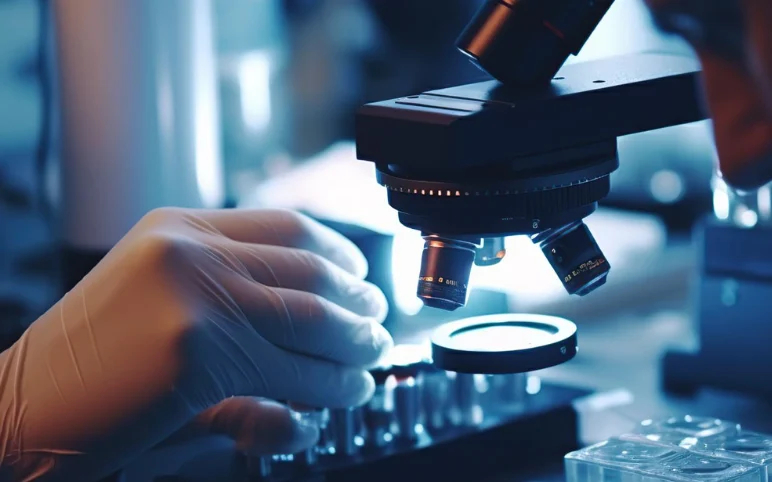LivaNova Launched SenTiva DUO, an Implantable Pulse Generator
On February 3, 2023, LivaNova PLC, a market-leading medical technology and innovation company launched SenTiva DUO™, an implantable pulse generator (IPG) with a dual-pin header that delivers VNS Therapy™ for the treatment of drug-resistant epilepsy.
This most recent IPG differs from the original SenTiva™, which was only offered in a single-pin format, by having a dual-pin header. Patients who were initially implanted with a dual-pin lead and IPG are now able to benefit from the most recent advancements in VNS Therapy, owing to the new SenTiva DUO.
The therapeutic advantages of SenTiva and SenTiva DUO are identical. Both allow Day-Night Programming, offer Scheduled Programming, and log low heart rate and prone position events in response to rapid heart rate increases, which may be related to seizures. The US Food and Drug Administration granted LivaNova’s SenTiva DUO premarket approval (PMA) supplement approval, and the product is now marketed in the US.
“This new offering enables those VNS Therapy patients with legacy dual-pin systems to have the option to replace their device with SenTiva DUO, delivering the most advanced VNS Therapy treatment without the need for lead revision,” said Dr. James Wheless, Professor, and Chief, Pediatric Neurology, Le Bonheur Children’s Hospital in Memphis, Tennessee. He further added, “Having access to SenTiva DUO offers patients therapy that can be customized and delivered automatically, providing optimal seizure control and enabling maximum adherence to treatment.”
Damien McDonald, Chief Executive Officer of LivaNova said, “We’re proud to offer SenTiva DUO to serve patients who were early adopters of VNS Therapy many years ago. Over time, all VNS Therapy patients must replace their generators as batteries become depleted. Now, our ‘pioneer patients’ will be able to take advantage of the latest technology with SenTiva DUO and experience the full benefits of VNS Therapy, without the need to replace their dual-pin lead.”
As per DelveInsight’s “Neurology Devices Market” report, global neurology devices are anticipated to grow at a CAGR of 7.46% during the forecast period from 2022 to 2027. The demand for neurology devices is primarily being boosted owing to the rise in the number of regulatory approvals for neurology devices across the globe. Further, the increasing cases of head injuries owing to accidents, workplace injuries, and others, and the rise in the geriatric population coupled with the increasing prevalence of neurological diseases, will increase the demand for various neurological devices across the globe. Additionally, the growing focus on improving the safety, affordability, and usability of neurology devices for end users is further expected to result in appreciable revenue growth in the neurology devices market during the forecast period (2022-2027).
Aspivix Received US FDA 510(k) Clearance for Cervical Stabilizer Carevix™
On February 2, 2023, ASPIVIX SA, an innovator, and developer of medical technologies to advance gynecological care, announced that the US Food and Drug Administration granted 510(k) clearance for its novel atraumatic cervical stabilizer, Carevix™. Carevix™ uses a gentle method to lessen pain and bleeding during various transcervical procedures like the insertion of intrauterine devices.
Women who underwent IUD insertion with either the Carevix™ device or a conventional cervical tenaculum reported statistically significant results with up to 73% lower pain scores and 78% lower bleeding occurrences in favor of the Carevix™ device in women comprising a single-blinded, randomized, multicenter, comparative study of 100 women.
Rapid patient screening with quantitative measurement of peripheral nerve function is offered by DPNCheck 2.0. A user-friendly touchscreen, step-by-step instructions built in, improved temperature compensation, a real-time nerve response display, and other improvements are included in the device. The software that comes with it makes it easier to document test results clinically. Population health data is collected in the cloud integrated with provider EHR systems.
Mathieu Horras, Chief Executive Officer of ASPIVIX said, “With the 510(k) clearance of Carevix™, a design-award winning device, we will provide our U.S. users with an innovative and easy-to-use system that brings a gentler alternative to a century-old gynecological tool. Extensive research was incorporated into the development of Carevix™ so we know the unique and differentiating features it demonstrates with significantly less pain and bleeding that has the potential to dramatically improve the IUD adoption and placement experience for millions of American women.”
According to DelveInsight’s “Spinal Surgery Devices Market” report, the global spinal surgery devices market is estimated to grow at a CAGR of 5.65% during the forecast period from 2022 to 2027. The spinal surgery devices market is observing remarkable market growth owing to factors such as the subsequent rise in spinal disorders across the globe, increasing road accidents, and increasing demand for minimally invasive surgical procedures, among others. Further, the increasing demand for technologically advanced spinal surgery devices in the market will also spur market growth in the forthcoming years. Additionally, a rise in spending on spinal surgery products, along with the increasing product launches and approvals and other factors, will create a requisite for the spinal surgery devices in the market. Therefore, the market for spinal surgery devices is estimated to grow at a substantial CAGR during the forecast period from 2022 to 2027.
Biosense Webster Presented Late-Breaking Data on Pulmonary Vein Isolation with HELIOSTAR™ Balloon Ablation Catheter
On February 3, 2023, Biosense Webster, Inc., a division of Johnson & Johnson MedTech, and a company that specializes in the treatment of cardiac arrhythmias featured a late-breaking presentation of encouraging findings from the company-sponsored STELLAR study, titled “Pulmonary Vein Isolation of Paroxysmal Atrial Fibrillation with Multi-electrode Radiofrequency Balloon Catheter: Results from the Global, Multi-Center, STELLAR Study,” at the 28th Annual International AF Symposium.
The first radiofrequency balloon ablation catheter for cardiac ablation to receive EMEA approval is the HELIOSTAR™ Balloon Ablation Catheter. The CARTO™ 3 System and the HELIOSTAR™ Balloon Ablation Catheter work in unison to provide PVI with an effective, adaptable, and minimally invasive fluoroscopy workflow. In the US, the product has not been approved yet.
In drug-refractory symptomatic paroxysmal atrial fibrillation, the STELLAR study examined the safety and effectiveness of pulmonary vein isolation (PVI) using the HELIOSTAR™ Balloon Ablation Catheter (AFib). The HELIOSTAR™ Balloon Ablation Catheter underwent the largest clinical study to date with 12-month follow-up data.
Results of STELLAR study:
- In the analysis, 98.8% of the subjects had acute PVI, and 93.0% of them did so without the use of additional focal catheters.
- Most PVIs were obtained without the need for focal retouching.
- At 12 months, primary effectiveness was 67.7%, and >90% of patients were free from repeat ablation.
- Additionally, the study’s definition of clinical success, which was the absence of a 12-month recurrence of symptomatic atrial arrhythmia, was 77.7%.
“With the growing prevalence of AFib, it is important that innovative tools are evaluated in various markets and patient populations to deliver value to patients across regions,” said Sandeep Goyal, M.D., FHRS, Director, Electrophysiology Lab, and Piedmont Atlanta Hospital, who served as an investigator in the STELLAR study. He further added that “The results of this study provide further evidence of how RF balloon catheters can be an important tool for electrophysiologists when treating AFib.”
According to DelveInsight’s “Balloon Catheters Market” report, the global balloon catheters market was valued at USD 4.60 billion in 2021, growing at a CAGR of 8.78% during the forecast period from 2022 to 2027 to reach USD 7.62 billion by 2027. Factors such as the rising prevalence of lifestyle disorders such as hypertension and obesity which present themselves as major risk factors for the development of cardiovascular diseases as well as brain aneurysms, increasing incidence of cancers in the pelvic region affecting the urinary system in varying capacities, growing geriatric population base where age itself plays a major role in disease etiology, and technical innovation in product development such as the manufacture of drug-coated balloon catheters aimed at drug delivery at the site of action among other factors are expected to drive the balloon catheters market.
3M Launched Medical Adhesive with 28 Days Wear-time
On February 6, 2023, 3M, launched a new medical adhesive from 3M that can adhere to the skin for up to 28 days and is designed to work with a variety of sensors, long-term medical wearables, and health monitors. Before this innovation, extended medical adhesives had a maximum wear time of 14 days. To support the delivery of a more patient-centric model of care, 3M now doubles that standard.
Longer wear times for monitors and devices could lower costs, collect more data for better decision-making, and lessen disruption to patients. Device manufacturers now have more design freedom in addition to the liner-free stability feature in the new adhesive, 3M Medical Tape 4578, which can be stored for up to a year.
The company 3M boasts more than 55 years of skin adhesion research, and 3M Medical Tape 4578 expands the range of its medical adhesive products.
“Our 3M scientists created a technology and then pushed that tech to its boundaries without compromising skin health. Medical wearables are a cornerstone for the future of health care, and we’re committed to unlocking its potential with our world-class materials science,” said Chad Reed, director of global business for 3M Medical Materials and Technologies.
According to DelveInsight’s “Surgical Sealant and Adhesives Market” report, the global surgical sealant and adhesives market was valued at USD 2.18 billion in 2021, growing at a CAGR of 7.58% during the forecast period from 2022 to 2027 to reach USD 3.39 billion by 2027. The surgical sealant and adhesives market is slated to witness prosperity owing to the growing prevalence of chronic health problems such as cardiovascular problems, kidney problems, neurological issues, and others. The rise in road accidents requiring urgent surgeries is another factor in the growth of the surgical sealant and adhesives market. The continuous rise in cosmetic surgeries and growing focus on improving the safety, affordability, and usability of surgical sealants and adhesives are further expected to result in appreciable revenue growth in the surgical sealant and adhesives market during the forecast period (2022-2027).
First Patient Received Robotic-Assisted Removal of Kidney Stones Using the MONARCH™ Platform
On February 7, 2023, Ethicon, a Johnson & Johnson MedTech company, announced the successful completion of the first robotically assisted electromagnetic (EM)-guided percutaneous access and mini-percutaneous nephrolithotomy (PCNL) procedure using the MONARCH™ Platform, which received 510(k) clearance by the US Food and Drug Administration (FDA) in April 2022.
The clinical study, which involves the collection of performance data on robotic mini-PCNL procedures to optimize the MONARCH™ Platform and inform training and education, was conducted by UCI Health, the clinical enterprise of the University of California, Irvine (UCI), in collaboration with co-investigator, Dr. Mihir Desai from the University of Southern California (USC). UCI Medical Center, part of UCI Health, became the first hospital in the United States to utilize the MONARCH™ Platform for Urology.
The MONARCH™ Platform is the first flexible robotic platform approved for use in bronchoscopy and urological operations and strives to develop new treatment paradigms that enhance patients’ lives. The MONARCH™ Platform for Urology gives urologists the use of robotic assistance that is built for access, clearance, and control utilizing a handheld controller to traverse through the kidney. It gives urologists access to a single platform that may be used for both ureteroscopic and percutaneous nephrolithotomy (PCNL) treatments.
It offers 80% less radiation exposure during percutaneous access, in comparison to standard fluoroscopic guided access techniques. The minimally invasive technology provides improved accuracy and consistency while performing percutaneous access, and fewer needle sticks when obtaining access.
“This clinical study is the first in the world to research and demonstrate the potential for improved navigation, access, clearance, and control in mini-PCNL procedures using the MONARCH Platform for Urology,” commented Dr. Jaime Landman, chair of the UCI School of Medicine Department of Urology and director of the UCI Health Kidney Stone & Kidney Disease Services. He added, “In addition to potentially helping urologists achieve stone-free patients in a single procedure, this approach could help reduce the need for retreatment after kidney stone removal and decrease risks and complication rates.”
Dr. Mihir Desai, USC said, “The prevalence of kidney stones remains high, and many urologists seek a new treatment option that reduces overall retreatment and complication rates. In patients who require treatment through surgery, close to one in two will require retreatment within five years.”
As per DelveInsight’s “Surgical Robotic Systems Market Forecast and Competitive Landscape” report, the global surgical robotic systems market was valued at USD 5.02 billion in 2021, growing at a CAGR of 11.50% during the forecast period from 2022 to 2027 to reach USD 9.64 billion by 2027. The demand for surgical robotic systems is witnessing a surge due to the increasing surgical procedures, which can be attributed to various factors such as the increasing geriatric population who form a big part of the at-risk population for prostate cancer, valvular diseases, and endometriosis, among other diseases. Further, the growing need for robot-assisted surgery systems due to the growing inclination towards minimally invasive surgical approaches and the innovation in product development is paving the way for miniaturized surgical robots, ultimately contributing to the overall growth of the surgical robotic systems market during the forecast period from 2022-2027.
Candela Launched the New FDA-Cleared Profound Matrix™ System
On February 6, 2023, Candela, the leading provider of energy-based solutions worldwide, and the pioneer of the first and only long-pulse radiofrequency (RF) micro-needling device, introduced the all-new Profound Matrix™ system. The SublimeTM, SublativeTM RF, and brand-new Matrix ProTM applicators are part of this multi-application system, which is intended to repair, maintain, and restore skin at different stages of the aging journey.
The all-new Matrix Pro applicator is made to regenerate and build new collagen with the added benefit of delivering a noticeable improvement in overall skin appearance and texture. The renowned Sublime and Sublative RF applicators are known for their bipolar RF treatments that reduce the appearance of fine lines and wrinkles.
To enhance patient comfort, reduce downtime, and maximize outcomes, the Matrix Pro applicator employs a variety of the thinnest microneedles available on the market. The Matrix Pro applicator can offer up to 3 different user-controlled depth and energy settings in a single insertion thanks to its ground-breaking Depth IntelligenceTM technology, which also includes real-time impedance monitoring. This enables tailored and reliable treatment outcomes.
The first-of-its-kind Profound Matrix system, which is powered by Dimensional RFTM introduces a whole new class of medical aesthetic treatments that provide multi-dimensional therapeutic outcomes. This technique creates volume and strengthens skin structure while utilizing several modalities that work at up to three depths of the skin, enabling practitioners to tailor and administer exact treatments based on patient needs.
Geoffrey Crouse, Chief Executive Officer of Candela stated, “With its advanced outcome-focused technical innovations that deliver consistent results, we expect the Profound Matrix system to be the #1 choice for providers looking to add radiofrequency-based skin treatments to their offerings.” He mentioned further, “With the launch of the Profound Matrix system, Candela is now the first and only company in the aesthetics space to deliver a full range of micro-needling products that span the spectrum from mechanical micro needling pens (Exceed™) to short-pulse RF micro-needling devices (Matrix Pro applicator) to long-pulse RF micro-needling devices (Profound®).
Macrene Alexiades, MD, Ph.D., FAAD said, “The Matrix Pro applicator is a breakthrough in energy-based devices.” He added, “Its Depth Intelligence technology and real-time impedance monitoring allow for precise energy delivery at up to 3 adjustable and penetrable depths with a single insertion, while also providing vital feedback to the user during treatment. The Profound Matrix system presents a huge technological leap in RF micro-needling technology.”
“The Profound Matrix system and its Matrix Pro applicator take radiofrequency to a whole new level,” commented Gilly Munavalli, MD, MHS, FACMS. He further remarked, “The versatility of the Profound Matrix system, with its user-controlled depth and energy settings, allows the user to easily tailor treatment depths and the number of passes to accommodate each patient’s anatomy and comfort level. Using only topical numbing, my patients have been extremely happy with their results and report low pain scores with minimal downtime”.
According to DelveInsight’s “Energy-Based Aesthetic Devices Market” report, the global energy based aesthetic devices market was valued at USD 3.36 billion in 2021, growing at a CAGR of 8.93% during the forecast period from 2022 to 2027, to reach USD 5.60 billion by 2027. The energy-based aesthetic devices market is slated to witness prosperity owing to factors such as the growing prevalence of chronic skin problems, an increasing number of aesthetically conscious patients, technological advancements in the product line, enhanced accessibility to aesthetic procedures, rise in geriatric population, and the growing focus on improving the safety and usability of energy-based aesthetic devices are further expected to result in the appreciable revenue growth in the energy-based aesthetic devices market during the forecast period (2022-2027).



